Pyramides
« Les Enfants d’Horus, thĂ©ologie et astronomie »
ENiM 1, 2008, p. 7-14.
 Une enquête menée sur les Enfants d'Horus (Hâpy, Douamoutef, Imséti et Qébehsénouf ) dans les Textes des Pyramides permet de mettre en relief leur véritable identité théologique, leurs fonctions essentielles, ainsi que les correspondants que les Égyptiens leur avaient attribués dans le ciel nocturne, au sein des constellations que nous nommons Orion et la Grande Ourse.
Une enquête menée sur les Enfants d'Horus (Hâpy, Douamoutef, Imséti et Qébehsénouf ) dans les Textes des Pyramides permet de mettre en relief leur véritable identité théologique, leurs fonctions essentielles, ainsi que les correspondants que les Égyptiens leur avaient attribués dans le ciel nocturne, au sein des constellations que nous nommons Orion et la Grande Ourse.
 A synthetic study of the Sons of Horus (Hâpy, Duamutef, Imseti and Qebehsenuf) in the Pyramid Texts is proposed, showing their genuine theological nature, their main functions, and the celestial correspondants the Egyptian gave them in the night sky, inside the constellations we call Orion and Great Bear (Ursa Major).
A synthetic study of the Sons of Horus (Hâpy, Duamutef, Imseti and Qebehsenuf) in the Pyramid Texts is proposed, showing their genuine theological nature, their main functions, and the celestial correspondants the Egyptian gave them in the night sky, inside the constellations we call Orion and Great Bear (Ursa Major).
 Consulter cet article (68272) -
Consulter cet article (68272) -  Télécharger cet article au format pdf (36068)
Télécharger cet article au format pdf (36068)
« Les couleurs dans les Textes des Pyramides : approche des systèmes chromatiques »
ENiM 2, 2009, p. 25-52.
 Les notions de « couleurs » dans l’Égypte ancienne doivent être appréhendées non pas isolément mais selon une approche structurale, à l’intérieur de systèmes complémentaires ou antinomiques. L’analyse du vaste corpus des Textes des Pyramides permet ainsi de mettre en évidence la spécificité et les implications idéologiques du rouge (décher), qui s’oppose aux trois autres couleurs « fondamentales » que constituent le noir (kem), le blanc (hedj) et le vert (ouadj).
Les notions de « couleurs » dans l’Égypte ancienne doivent être appréhendées non pas isolément mais selon une approche structurale, à l’intérieur de systèmes complémentaires ou antinomiques. L’analyse du vaste corpus des Textes des Pyramides permet ainsi de mettre en évidence la spécificité et les implications idéologiques du rouge (décher), qui s’oppose aux trois autres couleurs « fondamentales » que constituent le noir (kem), le blanc (hedj) et le vert (ouadj).
 Concepts of “colors” in the Egyptian language cannot be studied separately; they have to be delt with inside structural systems, either complementary or antinomic. Through the analysis of the large corpus of the Pyramid Texts, this paper tries to highlight the specificity and the ideological background of the red colour (decher), as opposed to three other “fundamental” colors: black (kem), white (hedj) and green (ouadj).
Concepts of “colors” in the Egyptian language cannot be studied separately; they have to be delt with inside structural systems, either complementary or antinomic. Through the analysis of the large corpus of the Pyramid Texts, this paper tries to highlight the specificity and the ideological background of the red colour (decher), as opposed to three other “fundamental” colors: black (kem), white (hedj) and green (ouadj).
 Consulter cet article (99913) -
Consulter cet article (99913) -  Télécharger cet article au format pdf (38341)
Télécharger cet article au format pdf (38341)
« Horus : polysĂ©mie et mĂ©tamorphoses »
ENiM 6, 2013, p. 1-26.
 À l’instar du théonyme « Seth », le théonyme « Horus » est éminemment polysémique. Fondé sur l’analyse de plus de 900 attestations dans les Textes des Pyramides, cet article tente de classifier les différents référents théologiques, depuis le modèle archaïque, à portée historiographique, d’Horus de Hiéraconpolis jusqu’à l’élaboration de la figure d’Horus l’enfant héritier de son père Osiris. Au-delà du discours religieux, comme toujours, se laissent deviner les évolutions d’une pensée politique et les lourdes implications idéologiques de la diffusion du dogme osirien.
À l’instar du théonyme « Seth », le théonyme « Horus » est éminemment polysémique. Fondé sur l’analyse de plus de 900 attestations dans les Textes des Pyramides, cet article tente de classifier les différents référents théologiques, depuis le modèle archaïque, à portée historiographique, d’Horus de Hiéraconpolis jusqu’à l’élaboration de la figure d’Horus l’enfant héritier de son père Osiris. Au-delà du discours religieux, comme toujours, se laissent deviner les évolutions d’une pensée politique et les lourdes implications idéologiques de la diffusion du dogme osirien.
 Just as « Seth » appears to be, the god name « Horus » is an highly polysemic character. Through the analysis of over 900 occurrences in the Pyramid Texts, this paper attempts to classify the various theological referents, from the archaic model of Horus of Hieraconpolis – built for historiographical purpose – to the development of the character of Horus the child, heir of his father Osiris. Beyond the religious discourse, as usual, one can guess the trends of a political thought and the heavy ideological implications of the spread of the Osirian dogma.
Just as « Seth » appears to be, the god name « Horus » is an highly polysemic character. Through the analysis of over 900 occurrences in the Pyramid Texts, this paper attempts to classify the various theological referents, from the archaic model of Horus of Hieraconpolis – built for historiographical purpose – to the development of the character of Horus the child, heir of his father Osiris. Beyond the religious discourse, as usual, one can guess the trends of a political thought and the heavy ideological implications of the spread of the Osirian dogma.
 Consulter cet article (64311) -
Consulter cet article (64311) -  Télécharger cet article au format pdf (32348)
Télécharger cet article au format pdf (32348)
« De l’usage des classificateurs dans les textes funĂ©raires. L’exemple des toponymes Jskn, Ndj.t et GHs.tj dans les Textes des Pyramides et les Textes des Sarcophages »
ENiM 11, 2018, p. 7-22.
 Avec l’accroissement des études traitant des classificateurs (ou déterminatifs) égyptiens, il convient désormais de s’intéresser aux mécaniques d’attribution de ces signes aux graphies de divers lexèmes. Dans cet article, nous nous intéressons à trois toponymes récurrents dans les corpus funéraires que sont les Textes des Pyramides et les Textes des Sarcophage : Jskn, Ndj.t et GHs.tj. Ces trois localités, notamment liées au mythe osirien et à la régénération du roi défunt, présentent des similitudes et des divergences graphémiques de grand intérêt quant aux classificateurs qui les accompagnent. Ainsi, en observant les contextes dans lesquels apparaissent ces toponymes et en comparant leurs graphies, nous proposerons différents processus ayant pu mener les scribes et lapicides à leur attribuer des classificateurs d’apparence parfois contradictoire (par exemple O49 et N25). Considérations grammatologiques, mythologiques et perceptuelles semblent alors se côtoyer et s’entremêler pour offrir à la classification toponymique égyptienne une remarquable diversité et un potentiel informatif rare.
Avec l’accroissement des études traitant des classificateurs (ou déterminatifs) égyptiens, il convient désormais de s’intéresser aux mécaniques d’attribution de ces signes aux graphies de divers lexèmes. Dans cet article, nous nous intéressons à trois toponymes récurrents dans les corpus funéraires que sont les Textes des Pyramides et les Textes des Sarcophage : Jskn, Ndj.t et GHs.tj. Ces trois localités, notamment liées au mythe osirien et à la régénération du roi défunt, présentent des similitudes et des divergences graphémiques de grand intérêt quant aux classificateurs qui les accompagnent. Ainsi, en observant les contextes dans lesquels apparaissent ces toponymes et en comparant leurs graphies, nous proposerons différents processus ayant pu mener les scribes et lapicides à leur attribuer des classificateurs d’apparence parfois contradictoire (par exemple O49 et N25). Considérations grammatologiques, mythologiques et perceptuelles semblent alors se côtoyer et s’entremêler pour offrir à la classification toponymique égyptienne une remarquable diversité et un potentiel informatif rare.
 Following the increase of classifiers (or determinatives) study in Egyptology, we now have to analyse the mechanics of attribution of these signs in the writings of diverse lexemes. In this paper, we are interested in three toponyms recurrent in funerary corpus like Pyramid Texts and Coffin Texts: Jskn, Ndj.t and GHs.tj. These three localities, linked to the Osirian myth and to the dead king’s regeneration, offer interesting graphemic similarities and differences as for the classifiers accompanying them. Thus, in observing the contexts in which these toponyms appear and in comparing their writings, we will suggest several processes that could have led scribes and lapicides to assign classifiers seeming sometimes contradictory (e.g. O49 and N25). Grammatological, mythological and perceptual considerations then seem to mixing up to give to the Egyptian toponymic classification a great diversity and a rare informative potential.
Following the increase of classifiers (or determinatives) study in Egyptology, we now have to analyse the mechanics of attribution of these signs in the writings of diverse lexemes. In this paper, we are interested in three toponyms recurrent in funerary corpus like Pyramid Texts and Coffin Texts: Jskn, Ndj.t and GHs.tj. These three localities, linked to the Osirian myth and to the dead king’s regeneration, offer interesting graphemic similarities and differences as for the classifiers accompanying them. Thus, in observing the contexts in which these toponyms appear and in comparing their writings, we will suggest several processes that could have led scribes and lapicides to assign classifiers seeming sometimes contradictory (e.g. O49 and N25). Grammatological, mythological and perceptual considerations then seem to mixing up to give to the Egyptian toponymic classification a great diversity and a rare informative potential.
 Consulter cet article (42541) -
Consulter cet article (42541) -  Télécharger cet article au format pdf (24014)
Télécharger cet article au format pdf (24014)
« Les pyramides dans les problèmes mathĂ©matiques Ă©gyptiens »
ENiM 12, 2019, p. 233-246.
 Le papyrus Rhind place les pyramides au centre de quelques problèmes en lien avec des calculs de seqed et de hauteur. Deux autres énoncés, les problèmes pRhind no 60 et pMoscou no 14, ont été maintes fois mis en parallèle avec ces derniers et commentés en raison des difficultés d’interprétation qu’ils suscitent. La terminologie employée, le contexte des exercices, mais aussi l’état de l’archéologie peuvent permettre d’identifier les constructions décrites. L’architecture autorise également quelques comparaisons significatives qui amènent à nous interroger sur l’une des sources d’inspiration des papyri mathématiques du Moyen Empire.
Le papyrus Rhind place les pyramides au centre de quelques problèmes en lien avec des calculs de seqed et de hauteur. Deux autres énoncés, les problèmes pRhind no 60 et pMoscou no 14, ont été maintes fois mis en parallèle avec ces derniers et commentés en raison des difficultés d’interprétation qu’ils suscitent. La terminologie employée, le contexte des exercices, mais aussi l’état de l’archéologie peuvent permettre d’identifier les constructions décrites. L’architecture autorise également quelques comparaisons significatives qui amènent à nous interroger sur l’une des sources d’inspiration des papyri mathématiques du Moyen Empire.
 The Rhind mathematical papyrus incorporates a small group of problems focusing on pyramids and demonstrating how to calculate their seked side slopes and heights. Two other problems, pRhind 60 and pMoscow 14, have been discussed extensively in conjunction with the former problems due to the interpretive challenges they pose. The terminology they use and the context of the exercises mean that archaeology and philology can potentially provide information aiding understanding of the buildings described. Architecture uncovered in excavations may represent structures that inspired the problems outlined in the Middle Kingdom mathematical papyri, and the different classes of evidence are compared here.
The Rhind mathematical papyrus incorporates a small group of problems focusing on pyramids and demonstrating how to calculate their seked side slopes and heights. Two other problems, pRhind 60 and pMoscow 14, have been discussed extensively in conjunction with the former problems due to the interpretive challenges they pose. The terminology they use and the context of the exercises mean that archaeology and philology can potentially provide information aiding understanding of the buildings described. Architecture uncovered in excavations may represent structures that inspired the problems outlined in the Middle Kingdom mathematical papyri, and the different classes of evidence are compared here.
 Consulter cet article (53671) -
Consulter cet article (53671) -  Télécharger cet article au format pdf (26733)
Télécharger cet article au format pdf (26733)
« Osiris and the Solar Barks. New readings of two enigmatic compositions »
ENiM 16, 2023, p. 153-204.
 Nouvelle traduction avec édition synoptique des textes énigmatiques de deux compositions de l’au-delà étroitement liées : « le Transit des barques solaires » et « le Réveil d’Osiris ». L’exploration des nouvelles lectures et de l’iconographie révèle des parallèles à Abydos, et surtout dans la formule 670 des Textes de Pyramides : un texte essentiel de la théologie osirienne qui figurait en bonne place dans les liturgies mortuaires depuis l’Ancien Empire jusqu’à l’époque ptolémaïque.
Nouvelle traduction avec édition synoptique des textes énigmatiques de deux compositions de l’au-delà étroitement liées : « le Transit des barques solaires » et « le Réveil d’Osiris ». L’exploration des nouvelles lectures et de l’iconographie révèle des parallèles à Abydos, et surtout dans la formule 670 des Textes de Pyramides : un texte essentiel de la théologie osirienne qui figurait en bonne place dans les liturgies mortuaires depuis l’Ancien Empire jusqu’à l’époque ptolémaïque.
 New translation with synoptic edition of the enigmatic texts from two closely related netherworld compositions: the “Transit of the Solar Barks” and the “Awakening of Osiris.” An exploration of the new readings and iconography finds close parallels elsewhere at Abydos, and above all in Pyramid Texts, Spell 670: a crucial text of Osirian theology which featured prominently in mortuary liturgies from the Old Kingdom through the Ptolemaic Period.
New translation with synoptic edition of the enigmatic texts from two closely related netherworld compositions: the “Transit of the Solar Barks” and the “Awakening of Osiris.” An exploration of the new readings and iconography finds close parallels elsewhere at Abydos, and above all in Pyramid Texts, Spell 670: a crucial text of Osirian theology which featured prominently in mortuary liturgies from the Old Kingdom through the Ptolemaic Period.
 Consulter cet article (32714) -
Consulter cet article (32714) -  Télécharger cet article au format pdf (15001)
Télécharger cet article au format pdf (15001)
« A Novel Method for Constructing the Pyramid of Khufu: the Tilt Levering Cage Hypothesis »
ENiM 18, 2025, p. 93-105.
 Malgré plus d’un siècle de débats, les méthodes de construction des pyramides de Gizeh restent une énigme. Nous proposons une méthode de levage inédite inspirée de la construction navale antique, en affirmant que le keeling et le soutien sont essentiels à la solution. Une cage à levier basculant (TLC), chargée d’une pierre de construction, repose sur deux supports en caisson. La cage est inclinée alternativement d’un caisson à l’autre à l’aide de cordes fixées à son sommet. À chaque inclinaison, le caisson opposé est soulevé en empilant des poteaux. Nous soutenons en outre que la pyramide servait de base à des escaliers de transport temporaires sur tous les côtés, créant ainsi un espace permettant à la TLC et aux caissons de fonctionner. Des marches laissées ouvertes dans les flancs à des intervalles d’environ 2,6 mètres permettent un levage en toute sécurité sur les coffrages. Avec les limites de sécurité des coffrages, la taille de la base carrée a probablement déterminé la pente, la forme et la hauteur finale de la pyramide. Les pierres sont entreposées à côté de ces plates-formes, laissant des vides dans les escaliers qui sont ensuite comblés. Les TLC chargées sont hissées le long de ces escaliers. À chaque niveau, la cage est descendue à l’aide de poteaux à roulettes, déplacée vers le point de déchargement ou inclinée à nouveau pour le levage suivant. La séquence se poursuit jusqu’au pyramidion, après quoi les TLC soulèvent les pierres de revêtement pour achever la couche de finition de haut en bas. Nous discutons de l’existence potentielle de lignes de maçonnerie comme preuve de cette procédure.
Malgré plus d’un siècle de débats, les méthodes de construction des pyramides de Gizeh restent une énigme. Nous proposons une méthode de levage inédite inspirée de la construction navale antique, en affirmant que le keeling et le soutien sont essentiels à la solution. Une cage à levier basculant (TLC), chargée d’une pierre de construction, repose sur deux supports en caisson. La cage est inclinée alternativement d’un caisson à l’autre à l’aide de cordes fixées à son sommet. À chaque inclinaison, le caisson opposé est soulevé en empilant des poteaux. Nous soutenons en outre que la pyramide servait de base à des escaliers de transport temporaires sur tous les côtés, créant ainsi un espace permettant à la TLC et aux caissons de fonctionner. Des marches laissées ouvertes dans les flancs à des intervalles d’environ 2,6 mètres permettent un levage en toute sécurité sur les coffrages. Avec les limites de sécurité des coffrages, la taille de la base carrée a probablement déterminé la pente, la forme et la hauteur finale de la pyramide. Les pierres sont entreposées à côté de ces plates-formes, laissant des vides dans les escaliers qui sont ensuite comblés. Les TLC chargées sont hissées le long de ces escaliers. À chaque niveau, la cage est descendue à l’aide de poteaux à roulettes, déplacée vers le point de déchargement ou inclinée à nouveau pour le levage suivant. La séquence se poursuit jusqu’au pyramidion, après quoi les TLC soulèvent les pierres de revêtement pour achever la couche de finition de haut en bas. Nous discutons de l’existence potentielle de lignes de maçonnerie comme preuve de cette procédure.
 Despite over a century of debate, the construction methods of the Giza pyramids remain an enigma. We propose a previously undescribed lifting method inspired by ancient shipbuilding, arguing that keeling and supporting are central to the solution. A Tilt Levering Cage (TLC), loaded with a building stone, stands on two box-crib supports. The cage is tilted alternately from one box-crib to the other with ropes attached to the top. With each tilt, the opposite box-crib is raised by stacking crib posts. We further argue that the pyramid served as a base for temporary transport stairs on all sides, creating space for the TLC and box-cribs to operate. Steps left open within the flanks at intervals of roughly 2.6 metres allow safe lifting on box-cribs. Together with safe box-cribbing limits, the size of the square base likely determined the pyramid’s slope, form and final height. Stones are parked beside these platforms, leaving stair voids that are later infilled. Loaded TLCs are hauled up these stairs. At each level, the cage is set down using roller posts, moved to the unloading point, or re-tilted for the next lift. The sequence continues up to the pyramidion, after which TLCs raise casing stones to complete a top-down finishing layer. We discuss the potential existence of masonry lines as evidence for this procedure.
Despite over a century of debate, the construction methods of the Giza pyramids remain an enigma. We propose a previously undescribed lifting method inspired by ancient shipbuilding, arguing that keeling and supporting are central to the solution. A Tilt Levering Cage (TLC), loaded with a building stone, stands on two box-crib supports. The cage is tilted alternately from one box-crib to the other with ropes attached to the top. With each tilt, the opposite box-crib is raised by stacking crib posts. We further argue that the pyramid served as a base for temporary transport stairs on all sides, creating space for the TLC and box-cribs to operate. Steps left open within the flanks at intervals of roughly 2.6 metres allow safe lifting on box-cribs. Together with safe box-cribbing limits, the size of the square base likely determined the pyramid’s slope, form and final height. Stones are parked beside these platforms, leaving stair voids that are later infilled. Loaded TLCs are hauled up these stairs. At each level, the cage is set down using roller posts, moved to the unloading point, or re-tilted for the next lift. The sequence continues up to the pyramidion, after which TLCs raise casing stones to complete a top-down finishing layer. We discuss the potential existence of masonry lines as evidence for this procedure.
 Consulter cet article (2179) -
Consulter cet article (2179) -  Télécharger cet article au format pdf (836)
Télécharger cet article au format pdf (836)
ENiM 18 - 2025
8 article(s) - 8 octobre 2025.
ENiM 1 à 18 (2008-2025) : 227 articles
5 170 827 téléchargements
10 334 130 consulations.
Index des auteurs

Mots clés

Derniers articles : 
CENiM - Mise en ligne des volumes Ă©puisĂ©s : 
 Anne-Sophie von BOMHARD DĂ©cans Ă©gyptiens, CENiM 23, Montpellier, 2020 — (2020)
Anne-Sophie von BOMHARD DĂ©cans Ă©gyptiens, CENiM 23, Montpellier, 2020 — (2020) 
 Jean-Claude Grenier L'Osiris ANTINOOS, CENiM 1, Montpellier, 2008 — (26 dĂ©cembre 2008)
Jean-Claude Grenier L'Osiris ANTINOOS, CENiM 1, Montpellier, 2008 — (26 dĂ©cembre 2008) 
TDENiM - Mise en ligne des volumes Ă©puisĂ©s : 
 Twitter
Twitter 4136125 visites - 6670 visite(s) aujourd’hui - 103 connecté(s)
© ENiM - Une revue d’égyptologie sur internet
Équipe Égypte Nilotique et Méditerranéenne - UMR 5140 - « Archéologie des Sociétés Méditerranéennes » (Cnrs) - Université Paul Valéry - Montpellier III
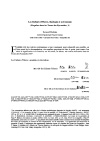
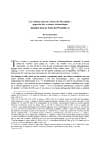
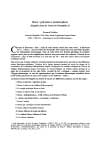
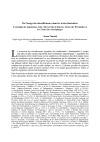
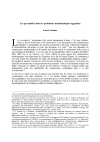
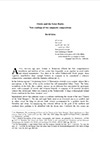
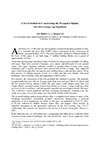





















 Contact
Contact
 Abonnez-vous !
Abonnez-vous ! Équipe Égypte Nilotique et Méditerranéenne
Équipe Égypte Nilotique et Méditerranéenne UMR 5140 « Archéologie des Sociétés Méditerranéennes » (Cnrs)
UMR 5140 « Archéologie des Sociétés Méditerranéennes » (Cnrs) Université Paul Valéry - Montpellier III
Université Paul Valéry - Montpellier III